
We travel a lot teaching knitting classes, mostly for an intermediate to advanced audience. Even so, in almost every class we encounter a student who twists their stitches. It’s a common error, especially when so many of us learn our crafts from books and online sources, without an instructor (or friend or grandparent!) i -person showing us the ropes. So, what is a twisted stitch?
Your stitches ought to “sit” a particular way on your needle, called the “stitch mount,” on both right-side and wrong-side rows.
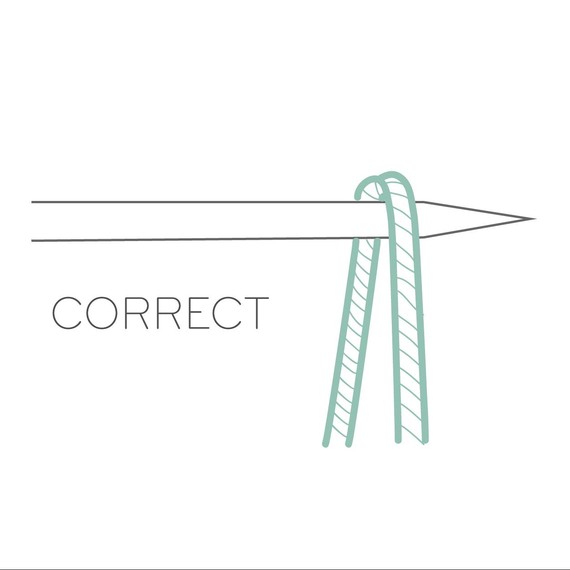
I like to think of the stitch on the needle as having two legs, like a little person on horseback. With your work facing you, and the stitches on the needle in your left hand, look closely at each stitch. The stitch sits on the needle with its right leg in front, or toward you, and its left leg in the back, away from you.
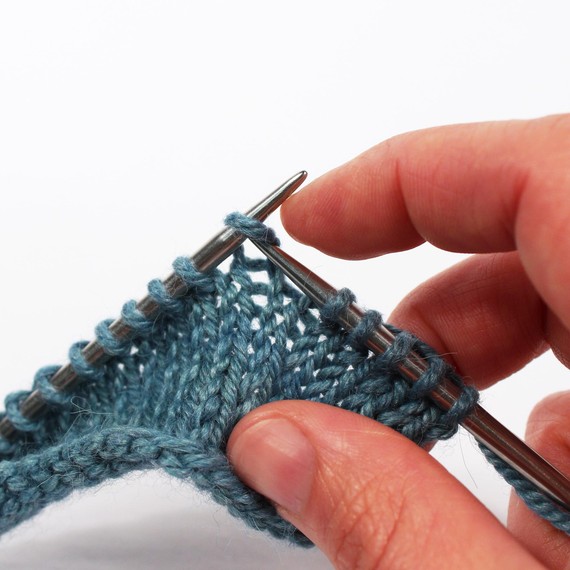
These stitches should be facing the same way regardless of whether you just worked a knit row or a purl row.
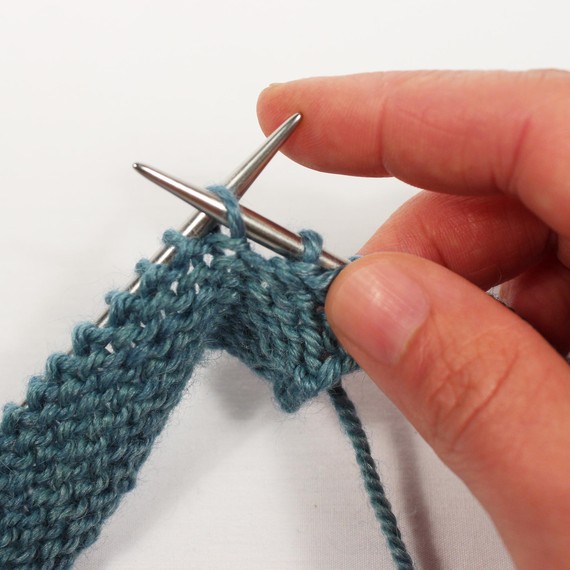
No matter what, on the right side and the wrong side, you will insert your needle into the “leg” of the stitch that’s coming over the top of the needle and is closest to you.
What if your stitches are facing the other way? The most likely culprit is that you are wrapping your yarn the wrong way around your needle on either the knit side, the purl side, or BOTH! You should always wrap the yarn counterclockwise around your needle. If a row of purl stitches is worked and wrapped the yarn the wrong way — which is much more common with continental knitters (knitters who hold the yarn in their left hand) — when the work is turned to knit a right side row, the stitches are facing the wrong way. This can result in this row of stitches being twisted, because when you wrap the yarn the wrong way the stitch becomes mounted on the needle incorrectly.
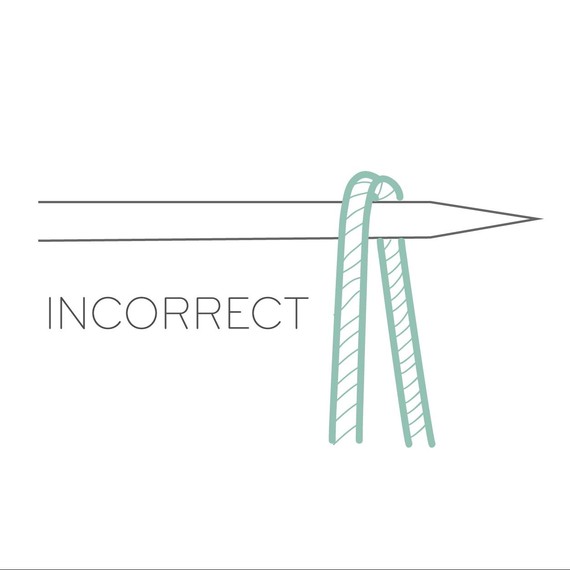
When your stitches are mounted incorrectly, you are more likely to twist them. The stitches face the wrong way, and if I were to work the purl stitch with the mount facing the wrong way I would twist the stitch closed, and the resulting stitch would be too tight and uneven.
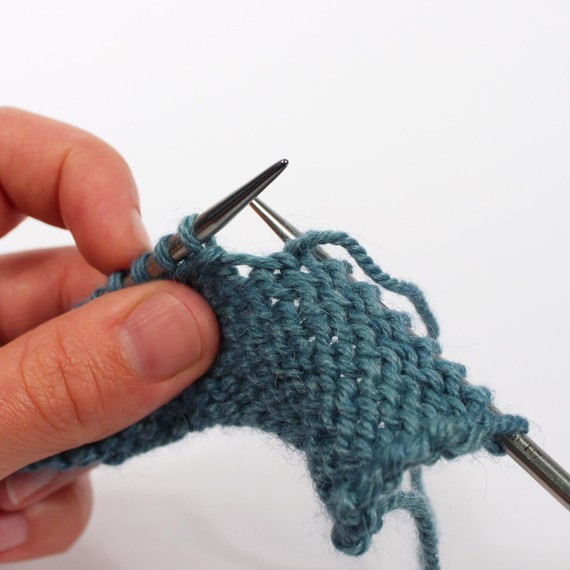
So what happens when your stitches are twisted? Below is a swatch where the purl stitches have been wrapped clockwise, resulting in the following row of knit stitches ending up twisted. The fabric looks less even, and you can see those twisted rows shifting to the right just slightly. Twisting your stitches will affect the texture of your finished item, and also, possibly, the finished size. If you consistently twist on either a knit or purl row your rows may elongate slightly. Your finished items may then come out too long. If you consistently twist both rows, your stitches become too tight. So much so, you may find they are difficult to work. Your finished items may come out to small.
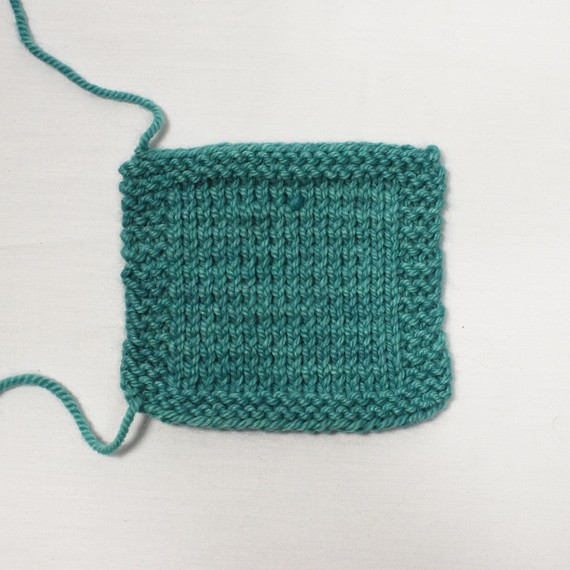
When you consistently wrap the yarn counterclockwise, and your stitches are always mounted with the left leg in front, your stitches will come out even. Notice on the swatch below how for each stitch — each little ‘v’ in the fabric — the sides of the stitch are the same size. Hurrah! In the swatch below you’ll see that the stitches are much more even.
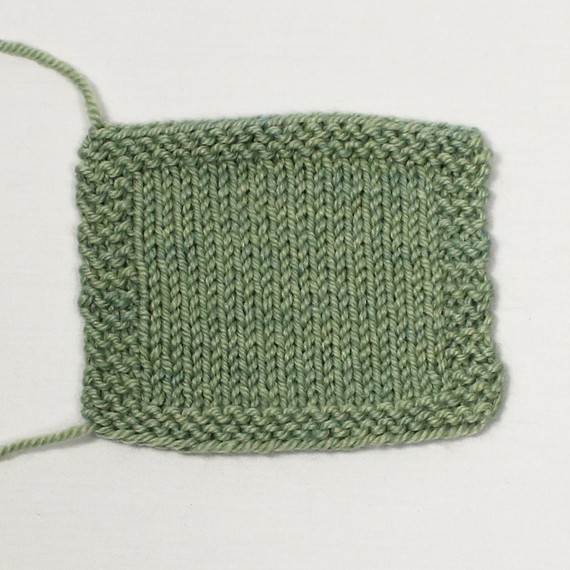
“Now, hold on,” you may say, “my grandmother taught me to knit, and my stitches are always mounted the other way.” I would guess that Grandma might be from the Middle East, Russia, or Eastern Europe — or learned to knit from someone who was. There are some regional styles that intentionally twist every stitch (eastern cross knitting), or sometimes twist one row, then untwist on the next (eastern uncrossed knitting), as part of the process. Variations of this are commonly called combined knitting, combination knitting, or Eastern knitting. While there is nothing wrong with any of these methods, it is good to know that is what you are doing and that you are doing it intentionally. It is good practice to make sure your stitches are consistently worked the way most patterns expect them to be worked, or your results may suffer.
Hopefully this brought a little bit of insight either into an aspect of knitting you hadn’t considered before, and made you a bit more curious about all the various knitting styles from around the world. After all, the best and most intuitive knitters have gotten to where they are by making lots of mistakes — then learning how to fix them!
SOURCE:http://www.marthastewart.com/1116578/how-fix-twisted-stitches-knitting